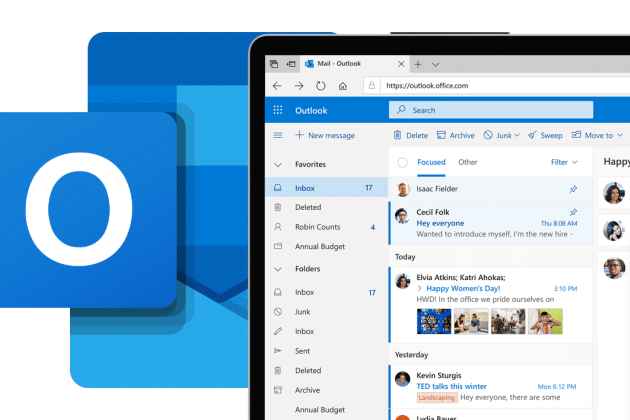We’ve all had embarrassing email experiences. Sending an email to the wrong person, forgetting to include an attachment, sending an inappropriate email in the heat of the moment, and making silly typos are just a few of the many email mistakes we all wish to correct as soon as we become aware of them. The good news is that you can recall these emails, and doing so in Outlook (and Gmail) is simple.
For starters, MS Outlook allows you to recall an email up to 120 minutes after it has been sent. Simply unsubscribe from the email and delete it from the recipient’s inbox. Alternatively, you can replace it with a new one that contains the correct facts, tone, and attachment. But be aware that sometimes your old email may not be automatically deleted.
This article describes how to recall an email, the prerequisites for recalling Outlook emails, and the potential outcomes and delays that can occur during recalls. This article’s instructions apply to Outlook 2019, 2016, 2013, 2010, and 2007 and Outlook for Microsoft 365.
What Does it Mean to Recall to an Email?
When you recall an email, you take proactive steps to ensure the message does not reach the intended recipients. Recalling an email allows you to prevent an important or confidential message from falling into the wrong hands or to correct an error before it’s too late. This procedure differs depending on the email service provider. As a result, how to recall an email in Outlook may vary from how to recall an email in Gmail.
Outlook Requirements for Recalling a Sent Email
To recall a sent email in Outlook, you and your recipient must have a Microsoft 365 or Microsoft Exchange email account in the same organization.
As a result, you cannot recall a message sent to Gmail, Yahoo, or any other email client. The ability to recall an email is unavailable in Outlook on the Web.
Messages that have been encrypted with Azure Information Protection cannot be retrieved. Keep in mind that you cannot recall messages your recipients have opened.
How to Recall an Email in Outlook in a Snap
- Start Outlook > Navigate to Sent Items > Messages > Actions > Recall This Message.
- Check the “Tell me if recall succeeds or fails for each recipient” check box to confirm a recalled message.
- For this process to work, you’ll need an Exchange server email, and you and the recipient must use Outlook.
Recalling an Outlook Email
The following is a step-by-step procedure for retrieving an email:
Step 1: Select the email to recall the message in Outlook.
Open Microsoft Outlook and navigate to the Sent Items folder to select an email to recall.
Step 2: Recall Message
The Actions tab in the ribbon area contains the option Recall This Message.
You might not see the Actions tab if you have a simplified ribbon. In that case, open a sent message you want to recall and click the three dots in the top right corner of the ribbon. The Actions tab can be found in the drop-down menu.
When you choose the Actions tab, a Recall This Message option appears on the right side.
Step 3: Delete Unread Copies and, if required, Create a New Message
A new Outlook window appears when you select the Recall This Message option. You have two choices for recalling your message:
- Remove any unread copies of this message.
- Unread copies should be deleted and replaced with a new message.
- Choose your preferred option. Check the box for recall successes or fails if you want to know if the recall succeeds or fails.
To recall the message, click the Ok button.
Step 4 – Confirm Messages Recalled
You will see a confirmation message on the screen indicating that you have recalled a message.
You will be notified if the message is successfully recalled.
Recalling a Message in Outlook on the Web
For sent items, there is no recall option in Outlook on the Web. However, you can cancel the send within 10 seconds.
This is how you do it:
Step 1: View All Outlook Options
In Outlook on the web, click the cog icon to access the View All Outlook Settings menu.
Step 2: Configure the Undo Send Cancellation Period
Scroll down the drop-down list to find the Undo Send tab in the Compose and Reply section. Set the cancellation timer to ten seconds.
At the moment, a cancellation period of more than 10 seconds is not permitted.
Step 3: Click the Undo Send Button
Create and send an email using Outlook on the web. The Sending pop-up window with an Undo option will appear at the bottom of the email pane.
To stop sending the message, click the Undo button.
Please keep in mind that sending a recall message only partially removes your old email. The recipient may need to open the recall message first for the original message to disappear. This is why you should put URGENT or something similar in the title of the recall message so that it opens before the first offensive email. Microsoft also states that the recipient may sometimes be notified when recalled messages are deleted from their inbox. Remember that even if you place an email, the recipient may still be aware that an incorrect or offensive message was sent to them, even if they can't view it.
Possible Outcomes of Recalling Outlook Email
The results of your attempt to recall a message can vary depending on the recipient’s email client settings, whether the original email has already been read, and several other factors. The following are some of the possible outcomes of an Outlook recall.
- The recall will fail if the recipient has already read the message. The recipient has access to both the original message and the new message (or notification of your attempt to recall the original message).
- The original message is deleted if the recipient does not open the original message before opening the recall message. Outlook notifies the recipient that the message has been deleted from their mailbox.
These outcomes occur if the recipient manually or via a rule moves both messages to the same folder.
Suppose the recipient checked the box under Tracking that says “Automatically process requests and responses to meeting requests and polls,” and the recipient hasn’t read the original email. In that case, Outlook deletes it and notifies the recipient that you did.
This feature is called Process Requests and responses on arrival in Outlook 2007, and it is found under Tracking Options.
Read Also: REMOTE WORK TOOLS: 21+ Tools & Software You Need to Work Remotely in 2023
If the original message was marked as read when the recall message was processed, the recipient is notified that you wish to delete the message. The original message is still in the inbox of the recipient.
Suppose the recipient moves the original message from the inbox to another folder (manually or via a rule) while the recall message remains in the inbox. In that case, the retraction fails regardless of whether either message was read. The recipient is informed that a recall attempt was unsuccessful. The original and new email messages are both accessible to the recipient.
Furthermore, if you use Outlook on a mobile device and try to recall a message, the process will almost certainly fail.
What to Do if You Can’t Recall an Email in Outlook
You cannot recall your message if the recipient has already opened it in Outlook. However, you can configure Outlook to give you more time to reconsider a message before sending it.
Outlook allows you to delay sending emails, so they go out after some time. If you’re constantly responding to emails, sending sensitive information back and forth, or simply making mistakes, you should start delaying or scheduling your emails in Outlook. You can easily configure this for all of your Outlook emails by following these simple steps:
Step 1:
In Outlook, click File in the upper-left corner.
Step 2:
Scroll down to the Manage Rules & Alerts section.
Step 3:
A window titled Rules and Alerts will appear on your screen. Select the New Rule option from this menu.
Step 4:
An additional pop-up window will appear. Click Apply Rule. This is listed beneath the Start From a Blank Rule rule. To proceed, click the Next button.
Step 5:
Ignore the remaining conditions on the list and click Next to proceed. Following that, a confirmation screen will appear. To confirm, press the Yes button.
Step 6:
Select the option to Defer Delivery by a Number of Minutes. Select several links. A pop-up screen will appear, prompting you to select your preferred duration. Input the desired time (120 minutes is the maximum) and click the OK button. After you’ve finished all of that, click Next.
Step 7:
Select the appropriate exception options if you have any exceptions. Then, to proceed, click the Next button.
Step 8:
Give your rule a name and, if available, check the Turn On This Rule checkbox. After that, click the Finish button.
How to Determine Whether Your Email Recall Was Successful
You can tell when an email is successfully recalled in Outlook because a recall success note appears at the beginning of the subject line.
Differences Between Outlook Versions
Overall, the majority of Microsoft’s services are similar and offer similar options. While this guide was created for the most recent version of Outlook, you can still follow along and find the recall option if you use the guide as a general outline. It may only be supported if you see this option in your Outlook version.
Why isn’t my email recall working?
Here are a few possible explanations for why your email recall isn’t working:
- You and the recipient do not share a Microsoft 365 or a Microsoft Exchange email account.
- Your recipient has already opened your message.
- The recipient or an Outlook rule redirects the message to another folder.
Is it the same as recalling an email in different versions of Outlook?
Yes, recalling an email is the same in different versions of Outlook. However, some options in Outlook 2007 have slightly different names. When you recall an email in Outlook 2007, you will be prompted to “delete unread copies” rather than “recall this message.” Outlook 2010 and Outlook 2013 allow you to “recall this message.”
If you recall an email in Microsoft Outlook, does the recipient know?
Yes the recipient will be notified if you recall an email in Microsoft Outlook.
How long does it take to find out if a recall is successful on Outlook?
It can take a few seconds to several minutes to see if a recall is successful. The time it takes to process a recall request is determined by the size of the email and the number of recipients. It may take longer to recall if you send a large message. Furthermore, if there are many recipients, Outlook may need to process the recall request for each one, which can lengthen the time it takes to determine whether or not a recall was successful.
Is there a time limit for recalling emails in Outlook?
There is no time limit for recalling emails in Outlook. For an Outlook recall attempt to succeed, the recipient must keep the email open. Unfortunately, there is no guarantee that a recipient will only open the email after the recall attempt. However, if you made a mistake or need to update the content, it’s still worth attempting to recall an email.
Conclusion
Outlook is a fantastic email client, but it can be even more helpful if you research Outlook productivity tips and use its features to your advantage. You can never send an email that you will regret if you can recall it. While Outlook does not automatically process requests to recall messages, you can immediately start using this helpful feature by following the simple steps in this guide.
While Outlook’s recall feature isn’t perfect, it can be a lifesaver when you can’t undo an email. To avoid using the recall feature, practice good email etiquette and double-check messages before hitting “Send” to avoid embarrassing or costly mistakes.
Related Articles
- WHY ADVERTISING WOULD KILL YOUR BUSINESS
- Business Email: How to Create a Business Email Stress-Free!!! (+ All You Need)
- PROACTIVE INTERFERENCE: Definition, Example, Difference & Tips to Know
- Accounts Payable vs Accounts Receivable Detailed Comparison
- BEST EMAIL SERVICE FOR BUSINESS(+ Free Options)






